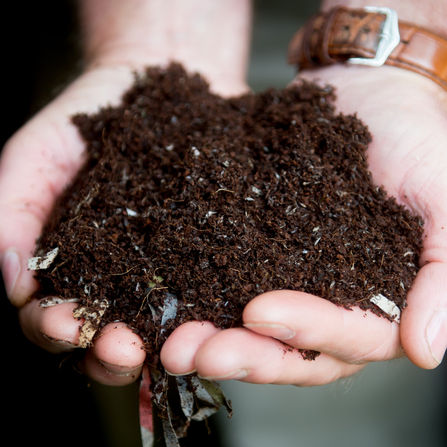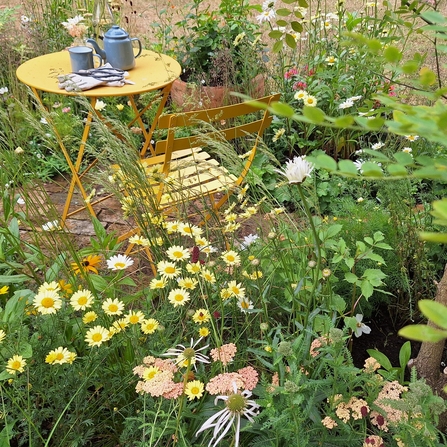If you've been worried about your garden in recent droughts, heatwaves and floods, you'll be relieved to hear that there are things you can do to help adapt gardens and other greenspaces to better cope with climate change. These will also help to make your green spaces better for wildlife too!
Climate-friendly gardens
Lawn with flowers growing by Wendy Carter

Compost by Gavin Dickson
One of the best things you can do to mitigate the effects of flooding is to ensure that you have as many permeable surfaces as possible. Replacing concrete or patio areas (where you can) with grass or soil will help to reduce rainfall run-off. Similarly, improving the soil organic matter by adding mulch and peat-free compost will not only improve the nutrient quality of the soil but also improve its water retention, helping to soak up water in a flood and hold onto it during dry spells. Building a compost bin is the most sustainable way to do this by adding in your garden and kitchen waste (cardboard, grass cuttings, teas bags, vegetable peelings etc).
Installing one or more water butts is a great addition to help your garden be resilient during droughts. Water butts will store rainwater during wet spells for use during future dry spells, helping you to use less tap water and saving money on your water bills too. A pond is one of the best features you can add to a garden to benefit wildlife and, during a drought, it can be a vital source of water for birds and insects as well as the aquatic life that already depends on it.

Wildlife-friendly garden by Autumn Barlow/RSWT
By planting the most diverse range of species you can, with a particular focus on those that attract pollinators or are foodplants of butterfly and moth caterpillars, you'll give your garden the best chance of survival under the variable weather we have throughout the year. It's time to experiment and grow plants that you might not have been able to in the past; our milder (albeit wetter winters) may offer the opportunity to grow plants that aren't as hardy as they once needed to be. Depending on your garden, you may be able to create micro-habitats that complement some of the changes we're seeing in our weather. This could be growing drought tolerant plants in a rock garden that require minimal watering and that will cope with high temperatures, for example.
Finally, if you have the space, planting large shrubs and trees will provide crucial shade for wildlife during these hot summers. Using hedges instead of fencing can also help to achieve this as well as having the bonus of providing vital habitat for nesting and foraging wildlife and allowing species to move between gardens.
Most of the changes you can make in your gardens and greenspaces to help make them more adapted to the risks of climate change will also make them more wildlife-friendly and help to boost biodiversity too. The key principles for both are to enhance diversity, allow connectivity between habitats and prepare for the weather events that are likely to occur so your gardens can flourish no matter the weather.






